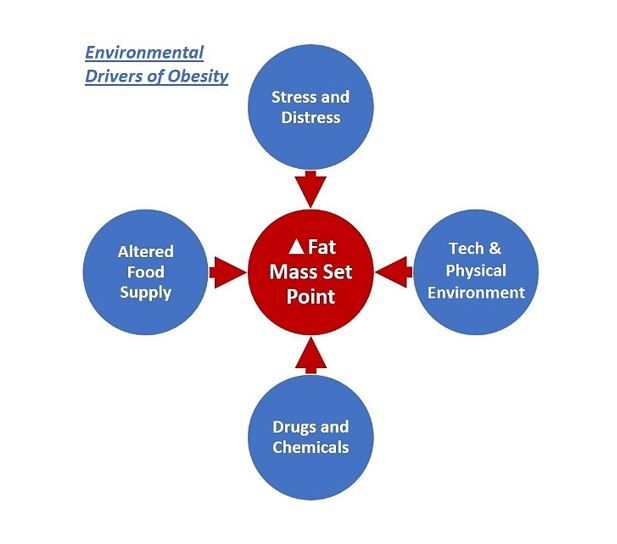- Clinical Technology
- Adult Immunization
- Hepatology
- Pediatric Immunization
- Screening
- Psychiatry
- Allergy
- Women's Health
- Cardiology
- Pediatrics
- Dermatology
- Endocrinology
- Pain Management
- Gastroenterology
- Infectious Disease
- Obesity Medicine
- Rheumatology
- Nephrology
- Neurology
- Pulmonology
New Insights into the Physiology of Obesity - What They Mean for Primary Care
The physiology of obesity makes weight loss, by itself, unlikely to successfully treat the chronic disease of obesity. What does this mean for primary care clinical strategies?
Twenty-two years ago, the National Institutes of Health published the first ever evidence-based guidelines for identification and treatment of obesity. This 262-page report was an important milestone, but at the time, the authors stated that the “understanding of how and why obesity develops is incomplete.” Today, we know much more. And because of that knowledge, obesity care has changed radically in twenty years.

Then, the focus of treatment was weight loss – in a mistaken hope that a successful patient could then maintain a lower weight through new, healthier habits. Today we know that such outcomes are exceedingly rare because obesity is an altered physiologic state. In obesity, multiple biological pathways work to preserve a level of fat mass that causes multiple health problems.
Environmental drivers
Obesity researchers know that obesity results from the effects of environmental triggers on genetically susceptible individuals. These triggers are many but may be grouped into four categories:
- Alterations to the food supply are most cited – the composition of food, its quantity, and its promotion to consumers. Research has identified many dimensions of the food supply that may contribute, but definitive evidence for any one of them being dominant is lacking.
- A physical and technological environment that makes routine physical exertion less common also contributes.
- Stress and distress in many forms can promote a state of obesity. This might include experiences of traumatic stress, disrupted sleep, and many other environmental stressors.
- Finally, drugs and chemicals can act as endocrine disruptors with the effect of promoting obesity.
A chronic disease
Perhaps the most important change in understanding the physiology of obesity comes from a 2011 publication in the New England Journal of Medicine. Sumithran et al. demonstrated that weight loss causes changes in metabolic hormones that serve to return the body to its prior level of adiposity. Simply stated, the authors documented how the body acts to protect fat mass in subjects with overweight or obesity. The authors concluded:
One year after initial weight reduction, levels of the circulating mediators of appetite that encourage weight regain after diet-induced weight loss do not revert to the levels recorded before weight loss. Long-term strategies to counteract this change may be needed to prevent obesity relapse.
In other words, they documented that the physiology of obesity makes weight loss, by itself, unlikely to be an effective treatment for the chronic disease of obesity. It requires chronic treatment – just like dyslipidemia, hypertension, or diabetes.
Implications for primary care
The meaning of these insights for primary care is straightforward. When obesity is a clinical concern, simply advising a patient to lose weight will have a negligible benefit. The physiology of this disease state will make long-term clinical improvement very unlikely – even though many patients might lose weight in the short term.
The emerging standard of care is to use a range of treatments to help a patient reach and maintain a better state of health. These include dietary interventions, physical activity, behavioral therapy, pharmacotherapy, and metabolic surgery. Most often, a combination of these will yield the best outcomes. But because of the heterogeneity of obesity, therapy must be tailored to the needs of the individual.
A growing number of primary care providers are seeking certification in obesity medicine to equip themselves to provide such treatment. Others might instead refer to an obesity medicine specialist. Either way, the patient will benefit from evidence-based care for this complex, chronic disease.
_________________________________________________________________________________
Ted Kyle is a pharmacist and health innovator living in Pittsburgh. He's also a tireless advocate for people living with obesity. His widely-read daily commentary, published at conscienhealth.org/news, reaches an audience of more than 15,000 thought leaders in health and obesity.
_________________________________________________________________________________
